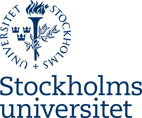Toxoplasma is extremely widespread as it infects virtually any warm-blooded vertebrate. It is estimated to be carried by one third of the human population and by 15-20% of the Swedish population. Although infections are normally benign, toxoplasmosis can be lethal in immunocompromised individuals and in unborn children.
From an early stage of infection, Toxoplasma is detected by cells of the immune system that survey the tissues. Paradoxically, this protective migratory function of immune cells appears to be targeted by Toxoplasma to mediate its dissemination in the organism. We have recently discovered that intracellular Toxoplasma hijack immune cells, e.g. dendritic cells, by inducing a hypermigratory phenotype that potentiates its dissemination while avoiding clearance. Tightly regulated molecular events take place shortly after host cell invasion that promote the migratory activation of infected dendritic cells. Studies on the migratory pathways of Toxoplasma contributed to the identification of novel pathways of migratory activation of dendritic cells involving GABAergic signalling and calcium signalling.





